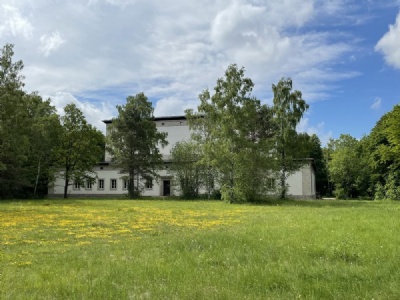Baldham
About ten kilometres east of Munich lies Baldham and there Hitler had a working studio built for sculptor Josef Thorak. Thorak had in the twenties been awarded various prizes for his sculptures. His monumental sculptures showed a form of human perfectionism which appealed the Nazis who saw this as a reflection and idealization of the perfect human form. Thorak was hired by the Nazis during the thirties for several works to decorate various places, including the party rally grounds in Nuremberg, the German pavilion at the world exhibition in Paris in 1937 and the Reich Chancellery in Berlin to name a few.
In a way, Thorak became the court sculptor for the Nazis and enjoyed a great respect among the Nazi bigwigs, not least Hitler. His close cooperation with the Nazis also gave him great social and economic benefits. Until 1937, Thorak had his working studio in Munich’s art pavilion, but in 1938, Hitler gave architect Albert Speer mission to build a new larger working studio for Thorak in Baldham. Construction of the studio continued until 1941 and sculptures up to 17 meters high could be made here. After the war, he was de-nazified and was able to resume his profession as a sculptor. He died suddenly in 1952 at the age of 63. Several of Thorak’s sculptures have survived to our days.
Current status: Preserved (2024).
Location: 48°05' 46.92" N 11°46' 52.90" E
Get there: Car.
Follow up in books: Huener, Jonathan: The Arts in Nazi Germany: Continuity, Conformity, Change (2006).

The studio survived the war without being damaged and functioned for several decades as a school and film studio before the state’s archaeological collection took over the studio in 1989. The studio is not open to visitors and it is located within a closed area that only authorized people have access to. Its front is obscured by vegetation but the back of the studio can be seen from an adjacent playground.